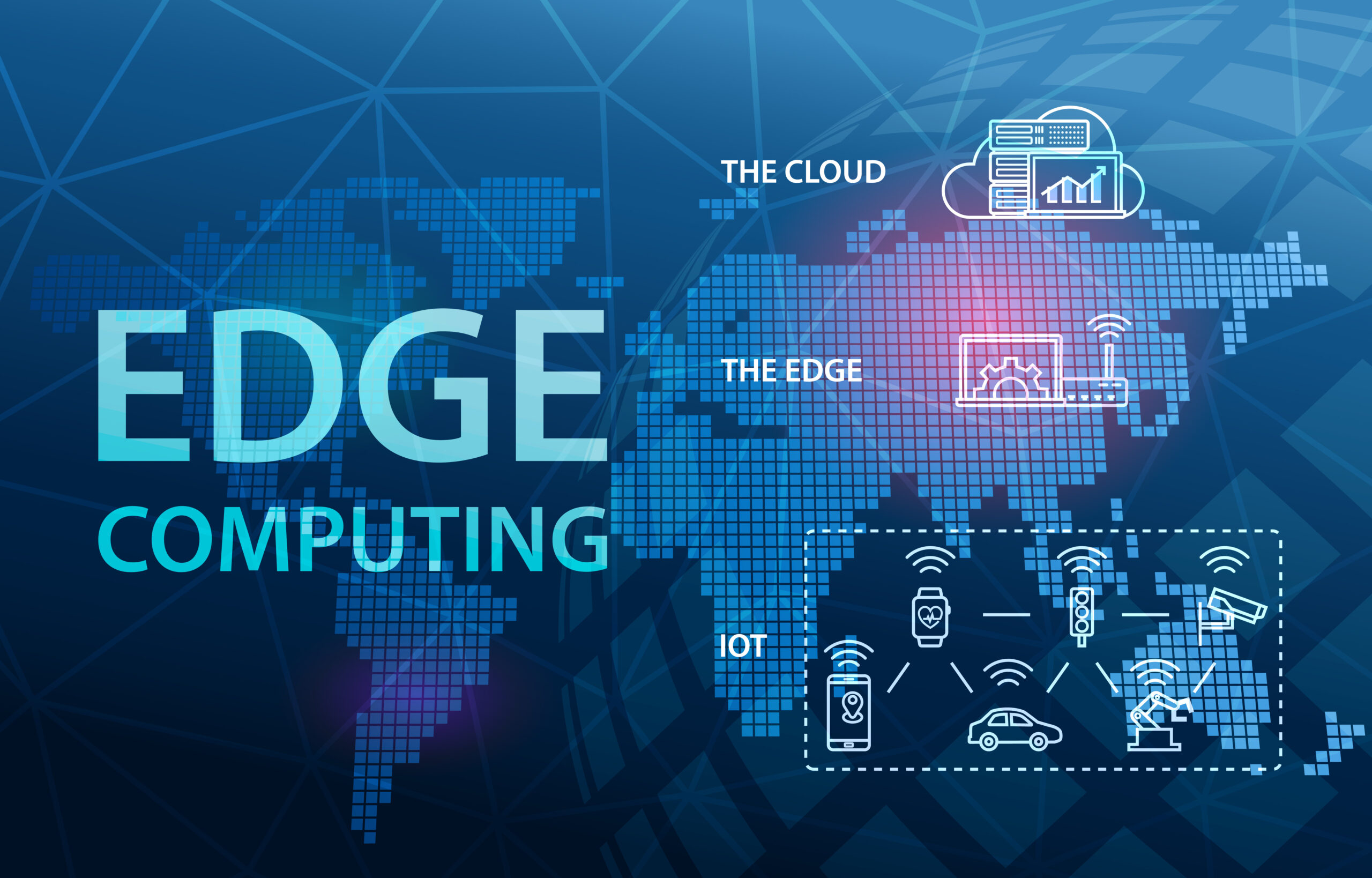Imagine if all your connected devices—from your smartwatch to your home security system—could process and share data instantly, without waiting for information to be sent to distant cloud servers and back.
Edge computing promises to make this a reality by bringing processing power and storage closer to where data is created. As more of our lives move online through ubiquitous IoT and mobile devices, edge computing will transform how companies design, build and operate their networks.
In this blog, we’ll explore what edge computing is, how it differs from traditional cloud and fog computing models, and what opportunities it opens up for industries and users alike.
Edge Computing: What Is It?
First, we must discuss what edge computing is in simple terms. Edge computing is a distributed computing framework that brings computation and data storage closer to the locations where they’re needed, rather than making all devices rely on distant, centralized cloud data centers. This location is often referred to as “the edge” of the network.
What Is the Process of Edge Computing?
Edge computing uses local edge servers and network gateways located near several IoT devices to process data closer to where it’s generated or needed. Data is captured, analyzed and processed at these edge nodes before being transmitted to centralized cloud servers. This removes the latency issues inherent in sending all data to faraway data centers over networks.
Differences from Cloud and Fog Computing
To fully understand what edge computing is, let’s take a look at how it differs from other similar technologies. While related, edge computing differs from cloud and fog computing in significant ways.
Cloud computing centralizes processing in large data centers far from end users. Fog computing distributes it across multiple access points but still relies on remote servers and networking. Edge runs processing at the very local devices and gateways at the last mile of connectivity, with no reliance on remote infrastructure.
Benefits of Edge Computing
We can’t talk about what edge computing is without mentioning the benefits. Having computation occur closer to data sources provides a slew of benefits. It reduces the latency issues that come with uploading and downloading data to distant clouds. It enables real-time responsiveness for latency-sensitive applications.
Processing locally aids in security and privacy, as less sensitive personal data needs to leave your devices. It also improves reliability, as edge nodes can still function even if cloud connectivity fails. Edge lowers network infrastructure and bandwidth requirements too.
Industries Transformed by Edge
A range of industries stand to gain massively by bringing computing to the edge. Companies deploying fleets of IoT sensors benefit from localized processing for quick monitoring and control. Telecom firms save on bandwidth costs. Manufacturers gain insights from distributed factory sensors. Utilities optimize microgrid operations. Cities deploy smart applications with edge-enabled infrastructure. Media companies stream high-quality content to any device.
Use Cases
- Some key edge computing use cases include connected vehicles using edge servers at traffic lights for latency-free autonomous maneuvers.
- Energy companies are employing edge technologies to balance renewable energy microgrids. Industrial firms are installing edge servers on factory floors to enable predictive maintenance.
- Retailers are deploying intelligent vending machines with built-in edge nodes.
- Gaming companies stream high-fidelity games from local edge servers.
- Edge even accelerates emerging technologies like augmented and mixed reality applications.
Enabling Technologies
What is edge computing’s role in other technologies? For edge computing to thrive, technologies like 5G wireless, IoT sensors, AI/ML, and MEC (multi-access edge computing) are indispensable. 5G’s high speeds and low latency are crucial for the connectivity of edge nodes. Affordable IoT sensors produce volumes of real-time data.
AI and ML running on the edge accelerate insights by analyzing petabytes locally. MEC infrastructure provides network edge server space and integration with telco ecosystems. Edge computing is driving innovations across each of these domains too, in a virtuous cycle.
Edge Hardware Infrastructure
Unlike virtualized cloud servers, edge infrastructure involves physical hardware deployment in neighborhoods and fields. Telcos and cloud giants are building out edge micro-data centers and ‘far edge’ servers to host workloads. Industrial partners offer edge server appliances optimized for vertical use cases. Overall costs are declining as edge infrastructure scales, just like public clouds once did. New models for managing these distributed assets are also evolving.
Edge Software Platforms
For enterprises to develop and manage latency-sensitive edge applications, agile software platforms are key. Major cloud vendors offer edge cloud services to abstract hardware and provide portability. Industrial IoT firms provide vertically tailored edge software.
Edge runtimes port cloud-native application frameworks like Kubernetes and serverless models. Device management tools monitor edge nodes, push updates and collect telemetry. Standards bodies also work to unify edge infrastructure and application programming models.
Network Issues at the Edge
However, moving computing to the edge introduces network management challenges of its own. Telcos must architect new edge network topologies to interconnect edge POPs. Providing redundancy, security and automated failover across distributed infrastructure is complex.
Edge workloads demand higher performance and more consistent low latency than traditional server applications. Quality of service guarantees have become critical for autonomous systems. Interoperability between edge zones operated by multiple telcos is another hurdle to overcome.
Data Management and Analytics
What is edge computing doing to your data? Edge sites process vast volumes of data, yet they still need to feed analytics to centralized warehouses and AI models. New database technologies are enhancing the ability to run analytics directly on edge nodes. Distributed ledgers provide tamper-proof mechanisms to audit edge data flows.
Data streaming and hybrid transaction/analytical processing enable real-time insights from edge-gathered data and cloud AI. Edge data management ensures security, privacy, and reliability even when cloud connectivity wavers
Skills Gap and Job Transformation
The edge skills shortage already looms large as edge workloads grow exponentially. Filling new roles across edge infrastructure, software development, data science and operations demands retraining current IT professionals.
Organizations need talent fluent in cloud native technologies as well as edge networking, hardware and system integration. Traditional network, electronics and IoT engineers have become as important as software developers. Edge data scientists combine applied math, distributed systems and vertical domain expertise. Technologists that can bridge across edge, fog and cloud environments are most sought-after.
Conclusion
High performance computing solutions bring data processing closer to end users in a way that overcomes the latency issues of distant cloud servers. As more connected devices proliferate and latency-sensitive applications emerge, edge computing will transform industries and drive new economic opportunities. Its convergence with technologies like 5G, AI and IoT is set to massively accelerate the pace of digital transformation over the coming years. For those willing to develop cutting-edge skills, the opportunities are indeed immense. Edge computing looks poised to redefine what’s possible with data at the network’s edge like never before.



